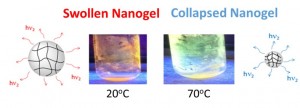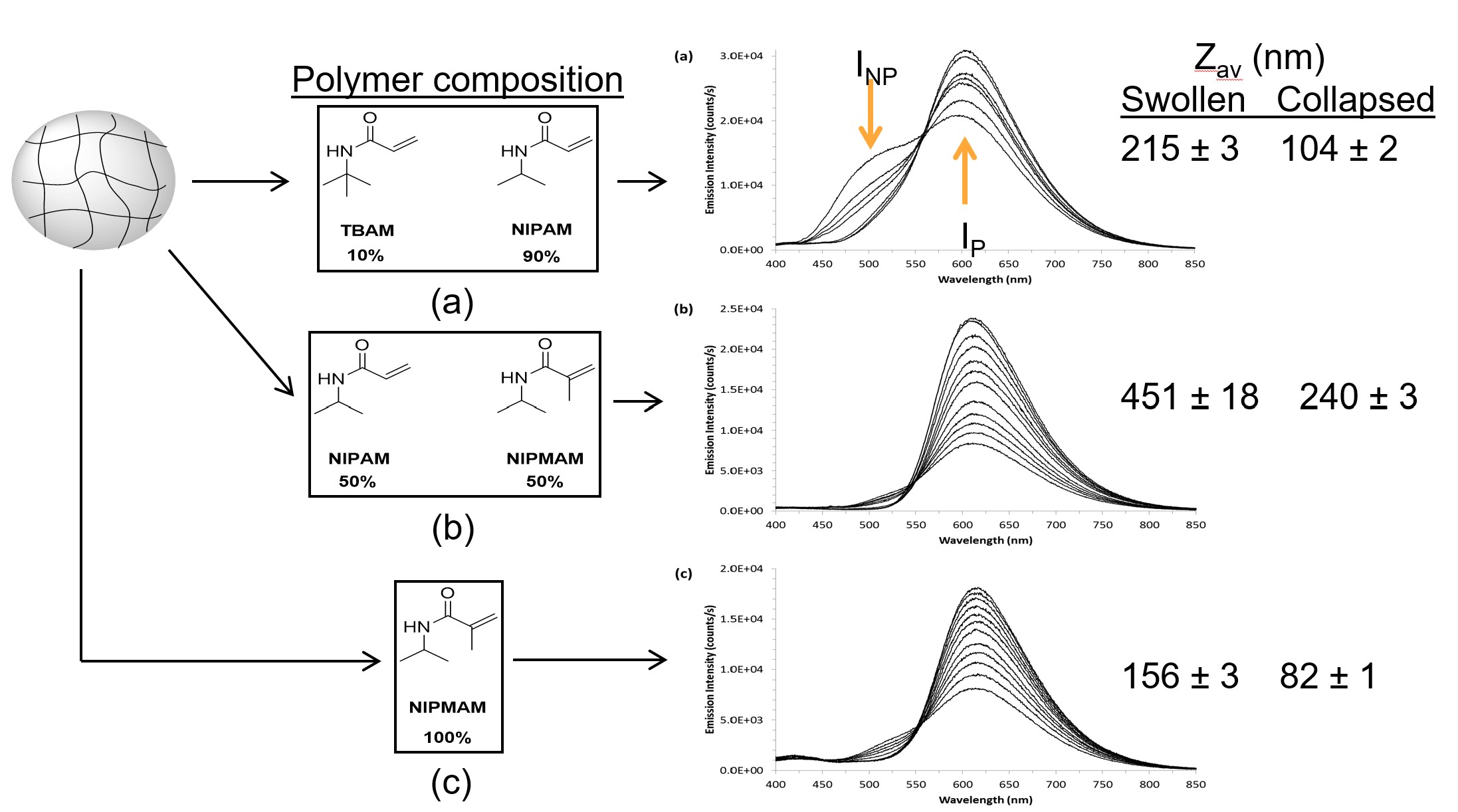 Stimuli-responsive polymers find broad-ranging applications in smart materials and smart packaging applications. Our group is interested in building functionalized polymers that respond, via basic photophysical phenomena, to changes in external stimuli (temperature, pressure, etc.). Fundamentally, we are interested in gaining knowledge about how the polymer architecture governs, among other things, the thermal properties of the polymer. Traditional synthetic polymer chemistry is used to systematically build and functionalize the polymers. NMR, mass spectrometry, and DSC are used to characterize the materials. Steady-state and time-resolved fluorescence methods are used to understand the fundamental photophysics. Specifically, using time-correlated single-photon counting, the polymer dynamics and rate constants for excited-state interconversions, are mapped out to understand which elementary reaction step controls the temperature-dependent photophysics. As a result, systematic structure-function correlations are obtained.
Stimuli-responsive polymers find broad-ranging applications in smart materials and smart packaging applications. Our group is interested in building functionalized polymers that respond, via basic photophysical phenomena, to changes in external stimuli (temperature, pressure, etc.). Fundamentally, we are interested in gaining knowledge about how the polymer architecture governs, among other things, the thermal properties of the polymer. Traditional synthetic polymer chemistry is used to systematically build and functionalize the polymers. NMR, mass spectrometry, and DSC are used to characterize the materials. Steady-state and time-resolved fluorescence methods are used to understand the fundamental photophysics. Specifically, using time-correlated single-photon counting, the polymer dynamics and rate constants for excited-state interconversions, are mapped out to understand which elementary reaction step controls the temperature-dependent photophysics. As a result, systematic structure-function correlations are obtained.

Ratiometric self-reporting nanogels